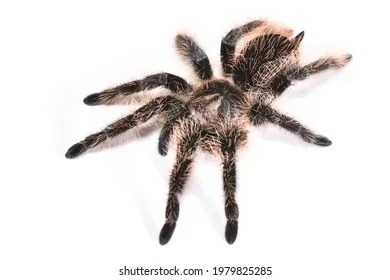Understanding the Curly Hair Tarantula
The Curly Hair Tarantula (Tliltocatl albopilosus), a captivating species native to the tropical regions of Central America, has become a popular choice among tarantula enthusiasts. Known for its docile temperament and striking appearance, the Curly Hair Tarantula is a relatively low-maintenance pet, making it suitable for both beginners and experienced keepers. This comprehensive guide will delve into every aspect of caring for a Curly Hair Tarantula, with a specific focus on its well-being, from habitat setup and feeding to health maintenance and breeding. Understanding the unique needs of this species, particularly when considering its origin in Nicaragua, is crucial for providing it with a thriving environment and ensuring a long, healthy life.
Origin and Habitat of the Curly Hair Tarantula
The Curly Hair Tarantula originates from the humid, tropical environments of Central America, including Nicaragua. In its natural habitat, this tarantula species burrows in the ground, seeking shelter under leaves, roots, and other natural debris. Understanding its natural environment is fundamental to replicating a suitable habitat in captivity. The climate in Nicaragua is characterized by high humidity and temperatures, especially during the rainy season. This knowledge will assist in creating a terrarium that mimics these conditions, contributing to the spider’s health and happiness. The species has adapted to thrive in a warm, humid environment, and the right conditions are essential for its well-being.
Nicaragua’s Role in the Tarantula’s Ecosystem
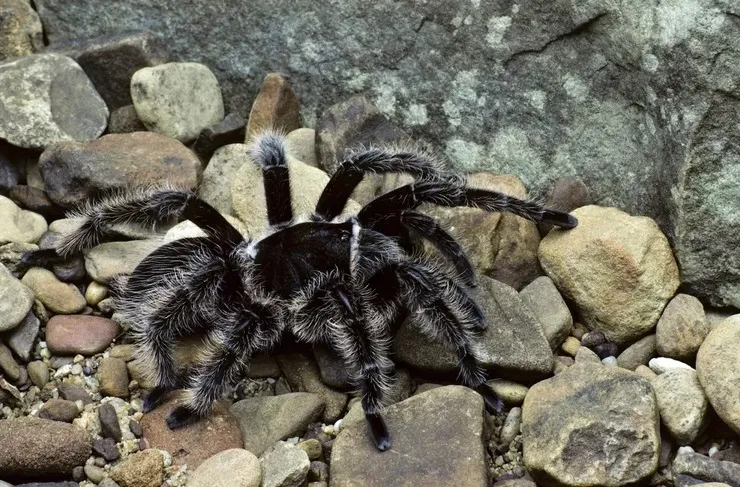
In Nicaragua, Curly Hair Tarantulas play a crucial role in the ecosystem. They are predators, helping to control insect populations in their native habitats. Their presence contributes to the balance of the local fauna, as they serve as a food source for larger animals like birds and some reptiles. Moreover, these spiders influence soil health by burrowing, which aerates the soil and promotes decomposition. Protecting the natural habitat of the Curly Hair Tarantula in Nicaragua is essential, not only for the survival of the species but also for the overall health of the ecosystem. Understanding their ecological role underscores the importance of responsible pet ownership and conservation efforts.
Setting Up the Perfect Habitat
Creating the ideal habitat is a foundational aspect of caring for a Curly Hair Tarantula. Mimicking their natural environment is crucial for the spider’s well-being and comfort. A well-designed enclosure provides not only a comfortable living space but also stimulates natural behaviors, reducing stress and promoting a healthier life. The enclosure size, substrate, and environmental conditions must all align to ensure the tarantula’s health and happiness. The goal is to replicate the warm, humid, and secure environment they experience in their native Nicaragua, where they burrow and seek shelter from predators and the elements. This meticulous setup is a key component to successful tarantula keeping.
Choosing the Right Enclosure
The enclosure should be appropriately sized for your Curly Hair Tarantula. A juvenile tarantula will need a smaller enclosure, while an adult should have a terrarium that is at least 10 gallons in size, providing ample space for movement and burrowing. The enclosure must have a secure lid to prevent escapes. Glass or acrylic terrariums work well, allowing you to observe your tarantula easily. Ventilation is also critical; ensure that the enclosure has adequate airflow to prevent the buildup of mold and maintain healthy humidity levels. Avoid enclosures with excessive ventilation, as this can lead to dryness, which is harmful to the spider. The enclosure should also be easy to clean and maintain.
Substrate Selection for Comfort and Health
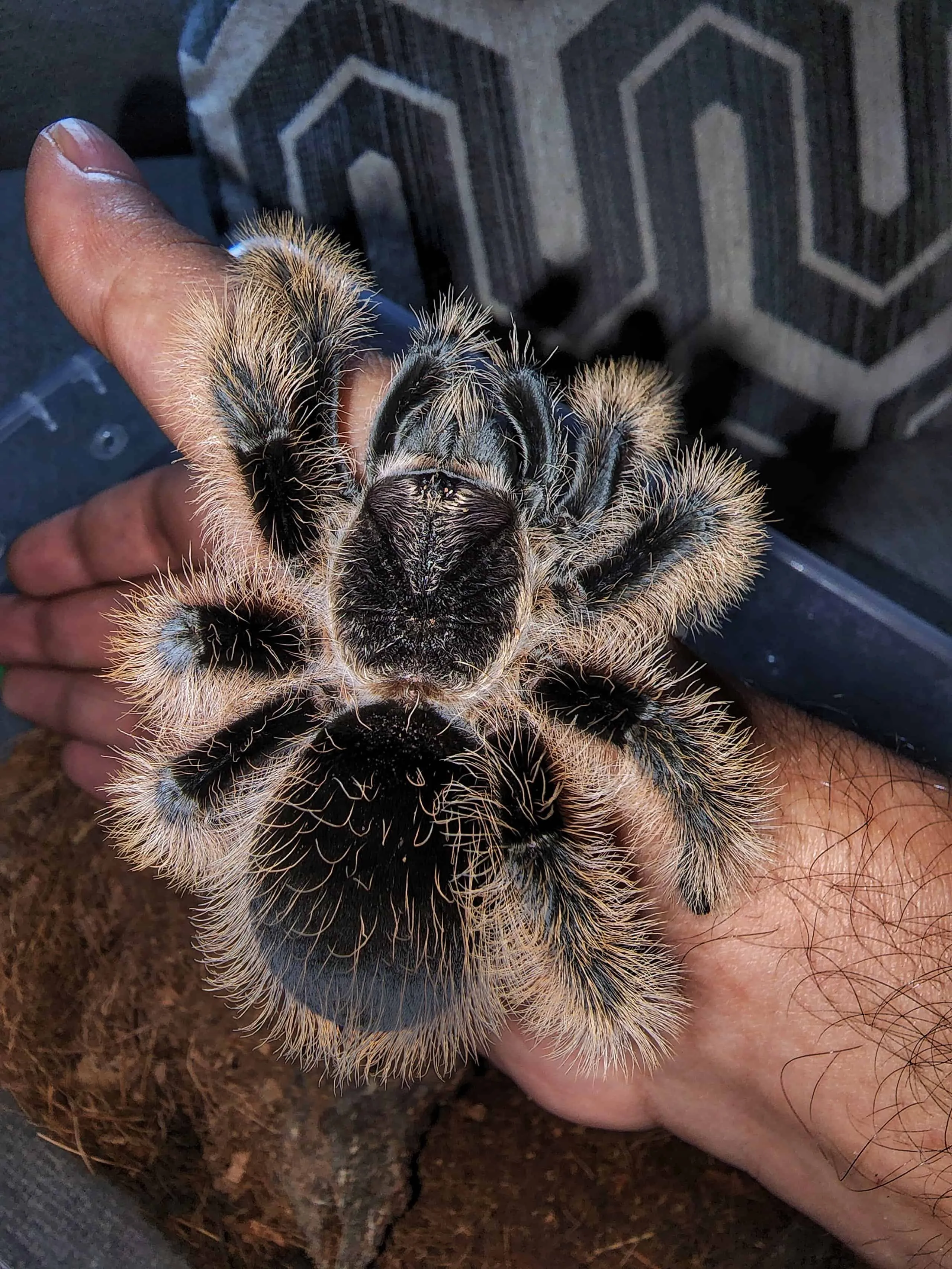
The substrate is the bedding material that lines the bottom of the enclosure and is crucial for providing comfort and allowing the tarantula to burrow, mimicking their natural behavior. The substrate should be about 4-6 inches deep to allow for burrowing. A good substrate should retain moisture and provide a suitable environment for the spider. A mixture of coconut fiber, peat moss, and a small amount of vermiculite works well. Avoid using wood chips, as these can be too dry and may harbor mites. The substrate must be replaced periodically to maintain hygiene and prevent the growth of mold and bacteria. Regular substrate changes are essential for the health and well-being of your Curly Hair Tarantula, contributing to a clean and healthy environment.
Maintaining Optimal Humidity and Temperature
Maintaining the correct humidity and temperature levels is vital for the health of your Curly Hair Tarantula. These spiders thrive in a warm and humid environment, similar to their natural habitat in Nicaragua. The ideal temperature range is between 75-85°F (24-29°C). You can use a heat lamp or a heat pad placed on the side of the enclosure to maintain the temperature. Monitor the temperature using a thermometer. Humidity levels should be kept around 65-75%. You can measure this using a hygrometer. To maintain humidity, mist the enclosure with water regularly, making sure not to over-saturate the substrate. Adequate humidity helps with molting and prevents dehydration. Proper temperature and humidity will keep your tarantula healthy and thriving.
Feeding Your Curly Hair Tarantula
Feeding your Curly Hair Tarantula is a straightforward process, but proper care is essential for your pet’s health. Providing a balanced diet and observing feeding habits can help you monitor your tarantula’s well-being. It’s important to provide the correct food items, feeding frequency, and portion sizes to keep the spider healthy and thriving. Understanding their dietary needs and feeding habits will make this a rewarding experience. A healthy, well-fed tarantula is a happy tarantula, so careful feeding is key to its care.
Best Food Options for a Healthy Tarantula
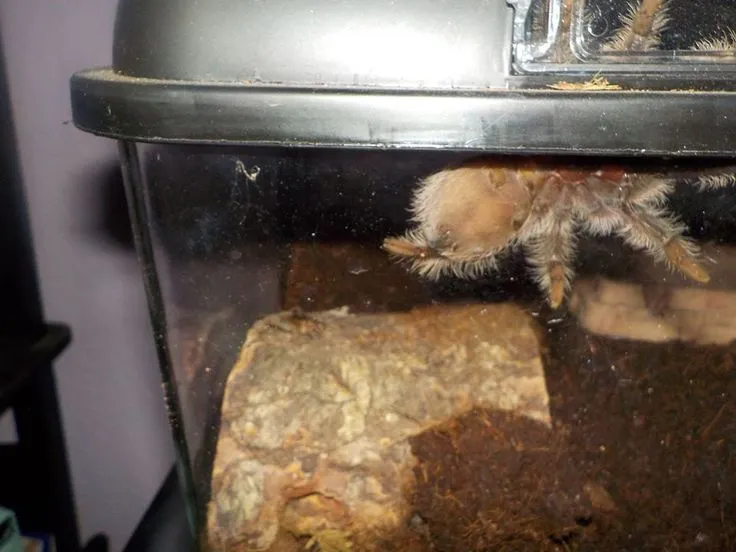
Curly Hair Tarantulas are primarily insectivores, meaning they eat insects. The primary food source should consist of appropriately sized insects, such as crickets, mealworms, and roaches. The size of the food item should be no larger than the tarantula’s body. Variety in the diet is beneficial. You can offer a mix of these insects to ensure the spider receives a variety of nutrients. Always ensure that the insects you provide are gut-loaded with nutritious food prior to feeding, which ensures your tarantula receives vital vitamins and minerals. Avoid feeding wild-caught insects, as these may carry parasites or pesticides that can harm your tarantula. Always have fresh water available for the tarantula.
Feeding Frequency and Portion Sizes
Feeding frequency depends on the tarantula’s age and size. Spiderlings should be fed more frequently, perhaps every other day, while adult tarantulas can be fed once or twice a week. Observe your tarantula’s abdomen to gauge its condition; a well-fed tarantula should have a plump abdomen. Remove any uneaten food within 24 hours to prevent mold growth. The amount of food you offer should be appropriate for the spider’s size. Overfeeding can lead to health issues, such as obesity, while underfeeding may hinder growth and overall health. Adjust feeding frequency based on the tarantula’s feeding habits and overall health. Always provide fresh water after a meal.
Watering and Hydration Needs
Water is essential for the survival of a Curly Hair Tarantula. Always provide a shallow water dish with fresh, clean water. The dish should be shallow enough to prevent the tarantula from drowning. You can also mist the enclosure regularly to increase humidity and provide a source of water droplets. Ensure the water is always available, especially during molting. Regular watering helps maintain the humidity levels that are crucial for molting and overall health. Refill the water dish and mist the enclosure as needed to keep the spider hydrated. Proper hydration will contribute to the overall health and happiness of your tarantula. Avoid overwatering the enclosure, as this can promote mold and bacterial growth.
Handling and Safety Precautions
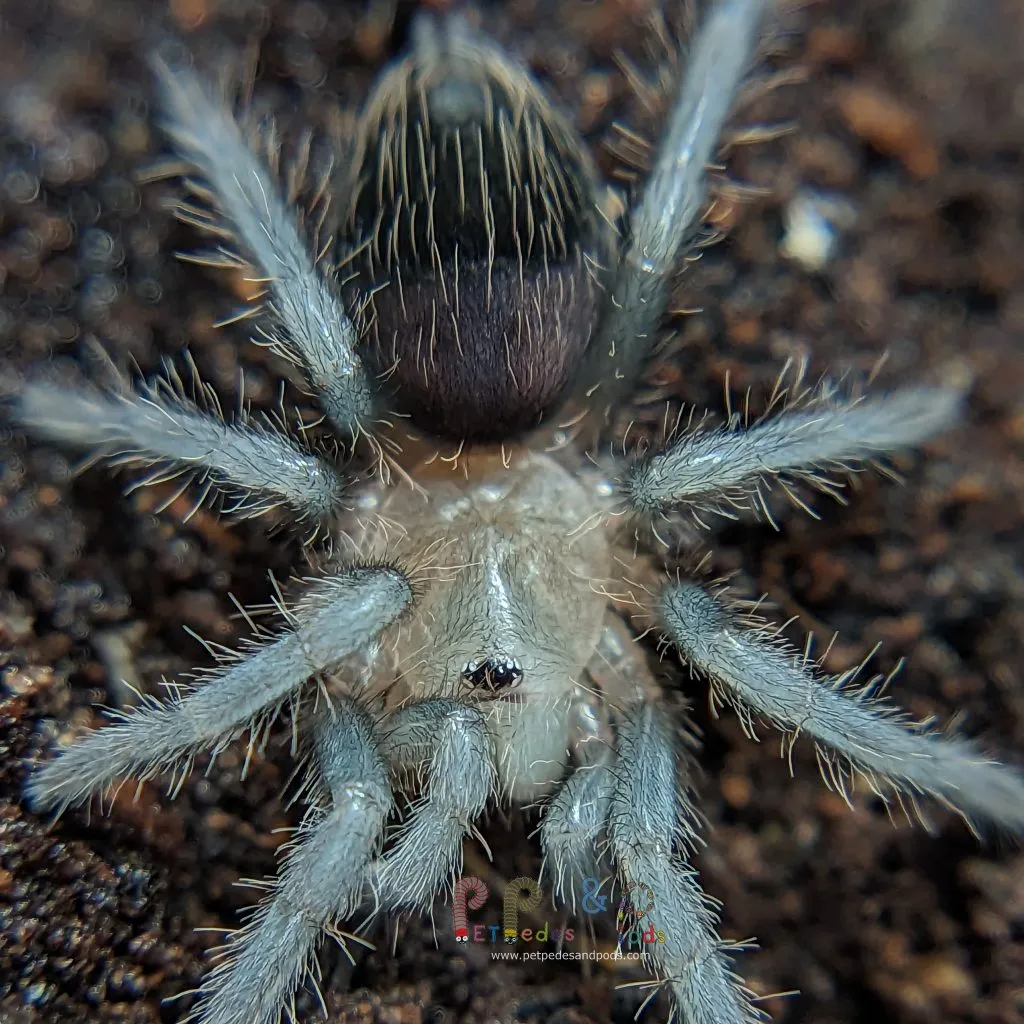
Handling a Curly Hair Tarantula can be a rewarding experience, but it’s essential to prioritize safety. Although they are generally docile, tarantulas can bite if they feel threatened. Understanding their behavior and taking appropriate precautions is vital. It is important to approach handling with respect and caution. Prioritizing safety will ensure both your well-being and the safety of the tarantula. With the right approach and knowledge, handling can be a safe and enjoyable aspect of tarantula ownership.
Safe Handling Practices
Before handling, always wash your hands to remove any scents that may agitate the tarantula. Handle your tarantula in a safe, enclosed area close to the ground in case it falls. Encourage the tarantula to walk onto your hand, rather than picking it up. Avoid sudden movements or loud noises, as these can startle the tarantula. Be mindful of the tarantula’s body language. If it raises its front legs or flicks its hairs (urticating hairs), it is a sign that it feels threatened. If this happens, gently place it back in its enclosure. Always handle the tarantula gently and patiently.
Identifying and Avoiding Potential Hazards
Be aware of the tarantula’s defensive behaviors. Curly Hair Tarantulas have urticating hairs on their abdomen, which they can flick off as a defense mechanism. These hairs can cause irritation to the skin and eyes. Avoid touching your face after handling the tarantula. Bites, though uncommon, can be painful and may cause local reactions. Handle with extreme caution, especially during molting, as the tarantula is more vulnerable. Ensure the enclosure is secure to prevent escapes, as an escaped tarantula can be difficult to locate and may pose a risk to household pets. Teach children and other household members about safe handling and the importance of respecting the tarantula’s space.
Common Health Issues and Solutions
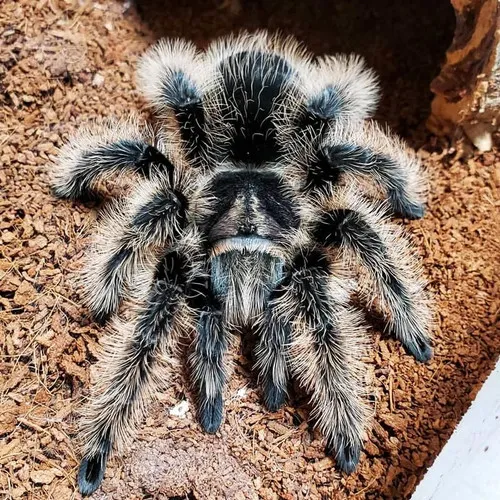
Like all pets, Curly Hair Tarantulas can experience health issues. However, by being vigilant and providing proper care, you can minimize the risk of these problems. Recognizing potential issues early and taking the correct action can help maintain your tarantula’s well-being. Being aware of common health problems and their solutions is a key part of responsible tarantula ownership, giving your pet the best chance at a long and healthy life. A healthy tarantula is a happy tarantula, and proactive health management is crucial.
Recognizing Signs of Illness
Be observant of any changes in your tarantula’s behavior or appearance. Common signs of illness include a loss of appetite, lethargy, or unusual behavior. Check for any physical abnormalities, such as swelling, discoloration, or injuries. Difficulty molting can also indicate health problems. If you notice these symptoms, it’s essential to identify the cause. Look for signs of mites, which can be seen as tiny, moving specks on the tarantula or in the enclosure. Unusual posture or a reluctance to move can also indicate that something is wrong. If you suspect your tarantula is sick, it is critical to address the issue quickly.
Preventive Care and Maintaining a Healthy Tarantula
Prevention is the best medicine. Maintaining a clean enclosure and providing the correct environmental conditions are vital to preventing health issues. Ensure that the substrate is replaced regularly and that the enclosure is kept clean. Proper feeding and hydration also play a significant role in the tarantula’s health. Isolate new tarantulas or those that appear sick to prevent the spread of potential illnesses. If you are unsure about a health issue, consult with a veterinarian who specializes in exotic animals or other experienced tarantula keepers. Regular observation, a clean enclosure, and a proper diet and care regimen are the cornerstones of preventative health care for your Curly Hair Tarantula, and these actions will help ensure your tarantula’s longevity.
Breeding and Reproduction
Breeding Curly Hair Tarantulas can be an interesting venture, but it requires some knowledge and preparation. It is important to understand the mating process and the care of spiderlings. This will help ensure a successful breeding experience and the well-being of both the adult tarantulas and the offspring. Breeding tarantulas can be an exciting and rewarding experience for experienced keepers.
Understanding the Mating Process
Mating Curly Hair Tarantulas requires careful planning and observation. The male tarantula will build a sperm web, which he uses to collect sperm. He then deposits the sperm into the female’s spermatheca. The female must be receptive to the male’s advances; otherwise, she may attack and kill him. Introduce the male to the female’s enclosure only when she is ready to mate. After mating, separate the male from the female to prevent him from being eaten. The female will then lay an egg sac, which she will protect and care for. Provide a suitable environment and diet to support the female during and after the mating process.
Caring for Spiderlings
Once the spiderlings hatch, the female will typically care for them initially. After some time, the spiderlings will disperse. You will need to separate the spiderlings into individual enclosures to prevent cannibalism. Provide each spiderling with its own small, appropriately sized enclosure. Feed the spiderlings small, gut-loaded insects, such as flightless fruit flies or small crickets. Maintain the correct humidity and temperature levels. The spiderlings will molt several times as they grow. Observe their molting progress. Caring for spiderlings can be time-consuming, but it is a rewarding experience for tarantula keepers. With careful planning and appropriate care, you can successfully breed and raise healthy Curly Hair Tarantulas.
